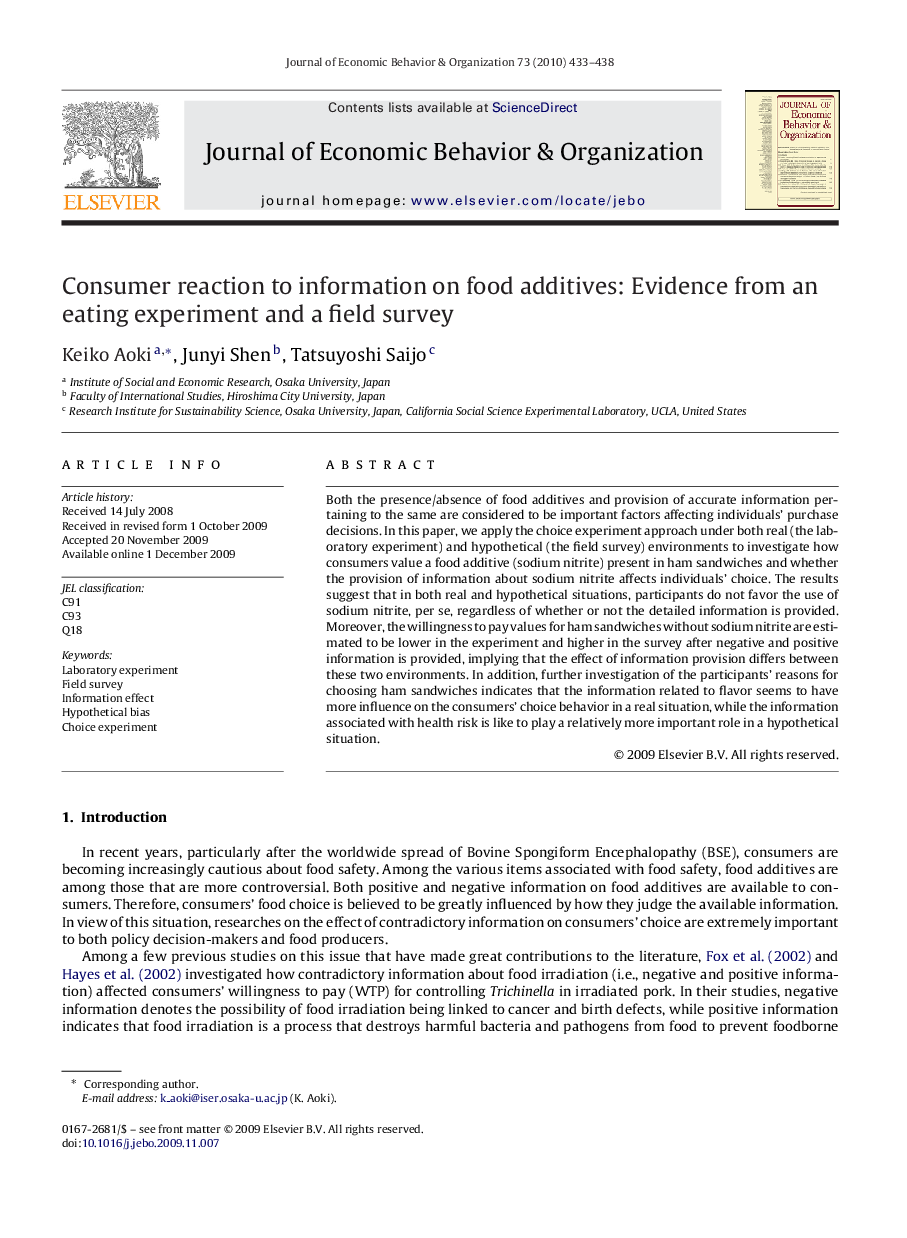| Article ID | Journal | Published Year | Pages | File Type |
|---|---|---|---|---|
| 884149 | Journal of Economic Behavior & Organization | 2010 | 6 Pages |
Both the presence/absence of food additives and provision of accurate information pertaining to the same are considered to be important factors affecting individuals’ purchase decisions. In this paper, we apply the choice experiment approach under both real (the laboratory experiment) and hypothetical (the field survey) environments to investigate how consumers value a food additive (sodium nitrite) present in ham sandwiches and whether the provision of information about sodium nitrite affects individuals’ choice. The results suggest that in both real and hypothetical situations, participants do not favor the use of sodium nitrite, per se, regardless of whether or not the detailed information is provided. Moreover, the willingness to pay values for ham sandwiches without sodium nitrite are estimated to be lower in the experiment and higher in the survey after negative and positive information is provided, implying that the effect of information provision differs between these two environments. In addition, further investigation of the participants’ reasons for choosing ham sandwiches indicates that the information related to flavor seems to have more influence on the consumers’ choice behavior in a real situation, while the information associated with health risk is like to play a relatively more important role in a hypothetical situation.
